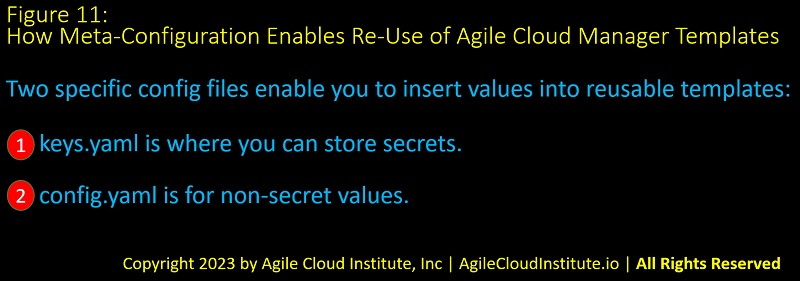Architecting the Agile Enterprise with the Agile Cloud Manager
Part 11 of 16: How Meta-Configuration Enables Re-Use Of Agile Cloud Manager Templates
Two very simple external files named keys.yaml and config.yaml can enable all of your system templates and appliance templates to become widely reusable across your organization. Both keys.yaml and config.yaml have a very simple structure composed of a list of key/value pairs.

The purpose of keys.yaml and of config.yaml is simply to store the data that enable the same system and appliance templates to be cloned as many times as needed.
keys.yaml is a file that the Agile Cloud Manager uses to store sensitive secrets that allow authentication with remote systems. Your automation can secure keys.yaml in each agent first by sourcing its contents from a secrets vault, then by locking down the directory in which it is placed in each agent, and finally by destroying it from each agent after it is no longer needed.
config.yaml has the same simple structure as keys.yaml. But the difference is that config.yaml is intended to store non-secret values which enable the Agile Cloud Manager to use unique names to create cloud resources whenever a clone of a system needs to be created.
The values stored in keys.yaml and in config.yaml can be ingested into Agile Cloud Manager system templates at runtime using a very simple variable-mapping syntax that is described in the engineering-level documentation in this web site.
Next: Proceed to Part 12 of 16
back to Site Home
back to Architecture section Home
Back to Part 10 of 16